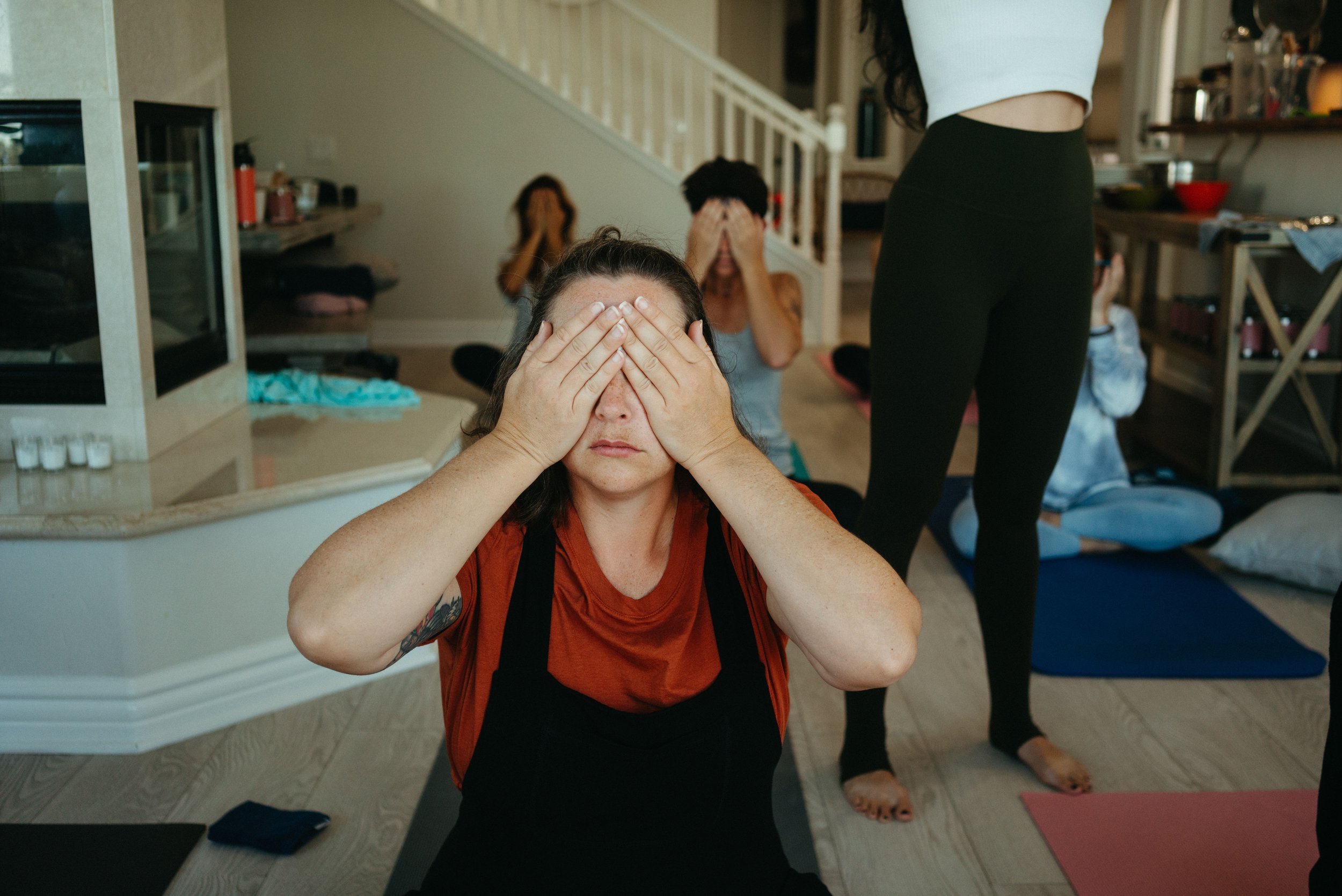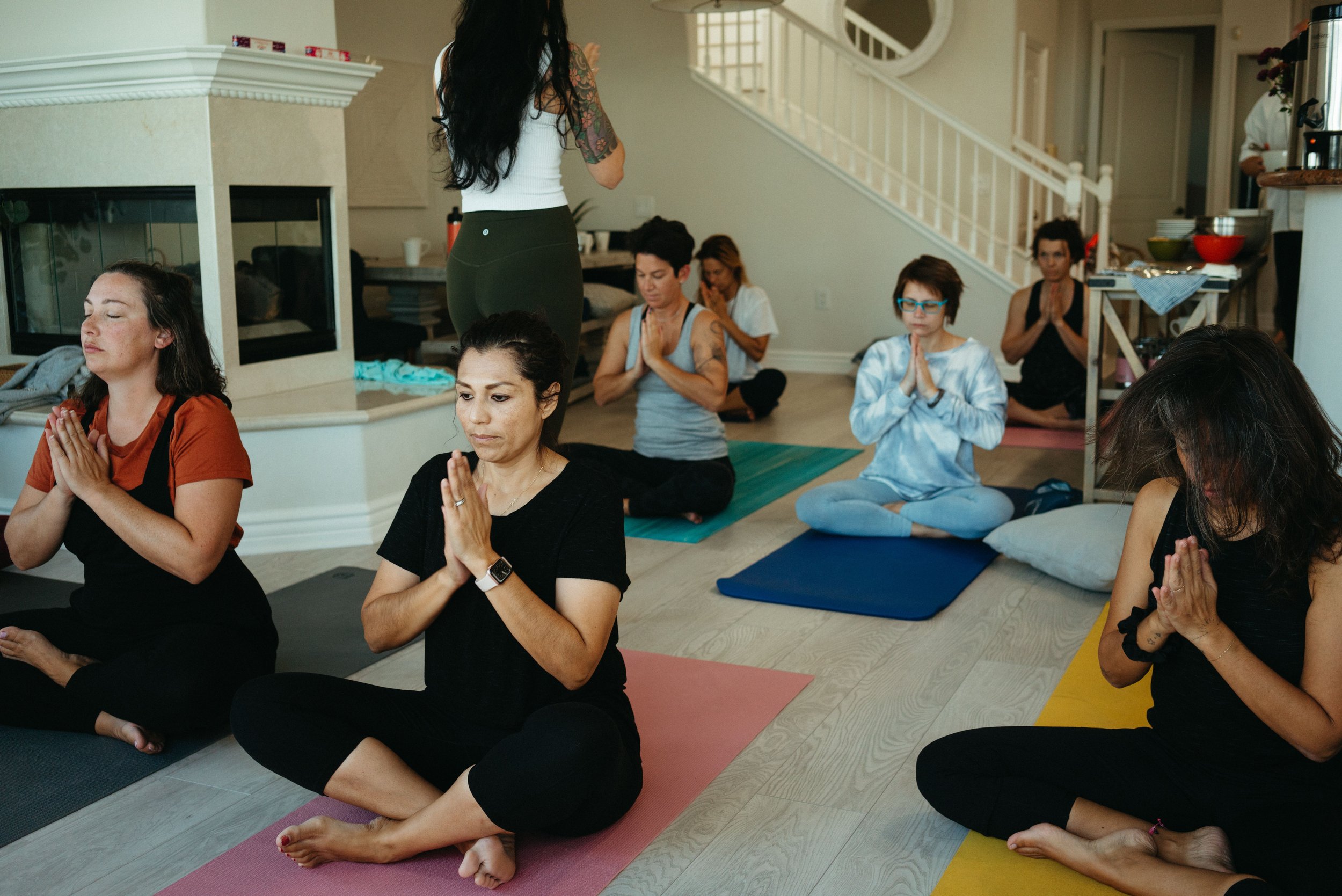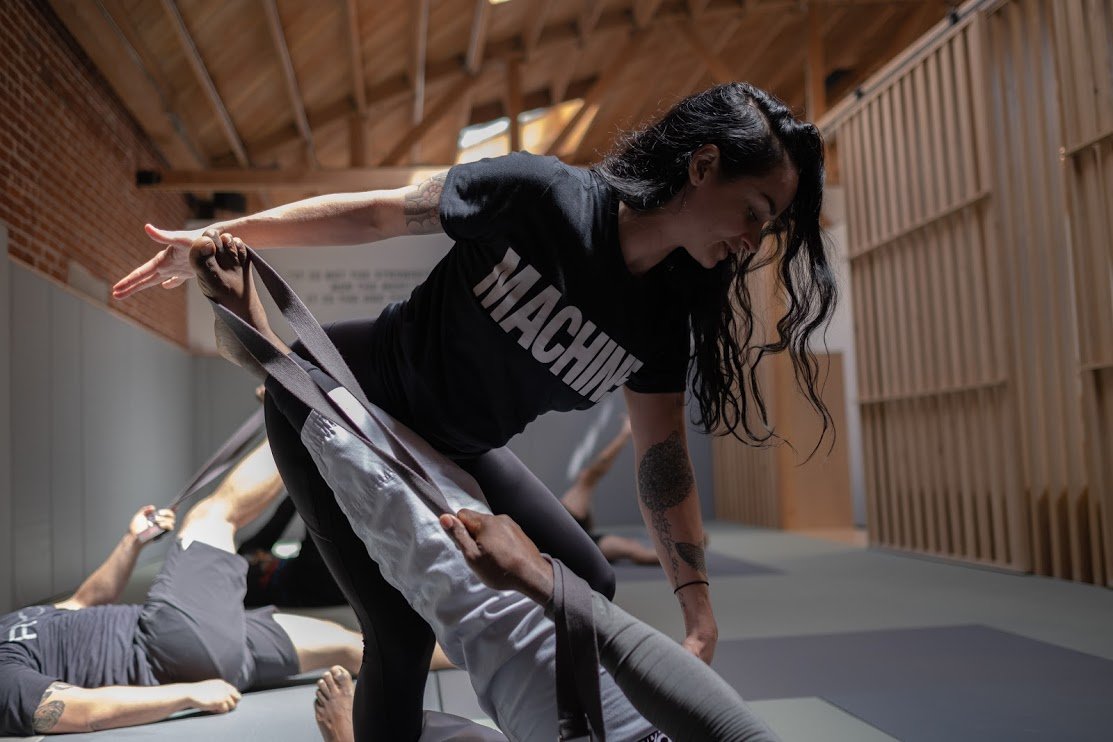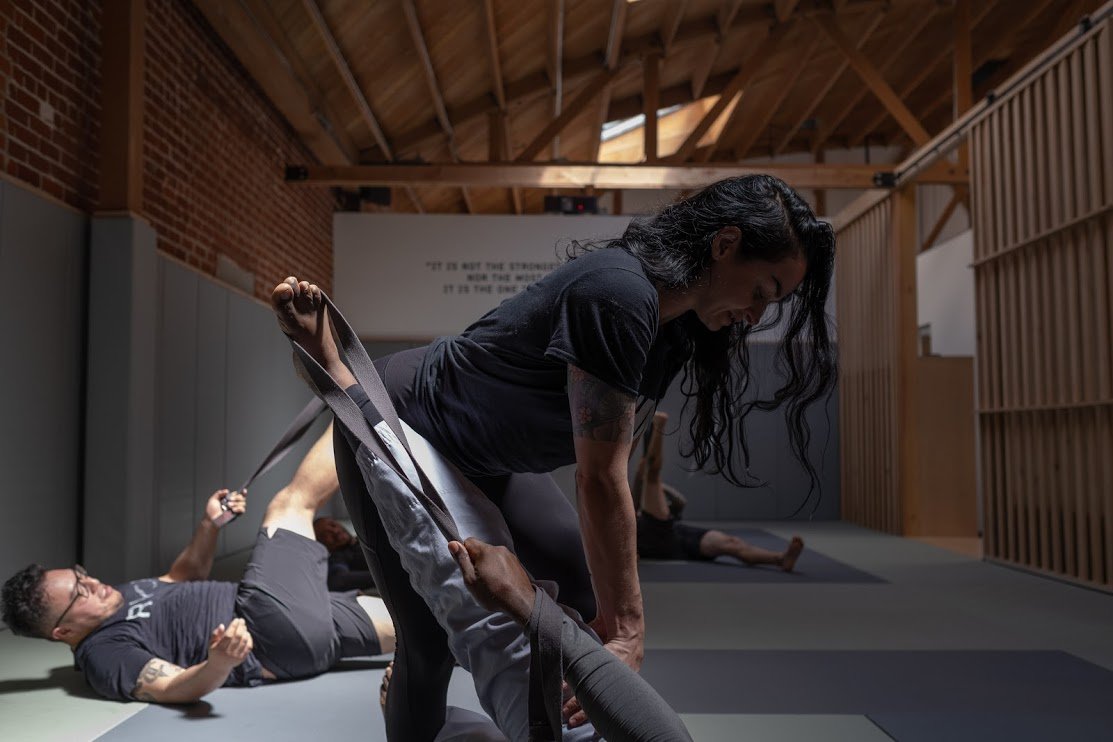Class Craft
When stepping into any movement class as a student, I have an expectation of what is about to transpire. I expect to be guided, to be challenged, for the teacher to have anatomical knowledge and suggestions for modifications. There have been times in classes I’ve taken where the teacher’s transitions didn’t feel right in my body, their music taste was very different from mine, and even had trigger reactions from something a teacher said or did. Are my reactions, my preferences, and the lack of connection the fault of the teacher? I say no. Worth mentioning that this is my viewpoint as an experienced mover. Beginner’s come to class with no idea of what’s about to happen. They may feel fearful, insecure, apologetic even that they are new. Whenever I am new to something, I feel more comfortable when I feel seen, heard and tended to; an increasingly difficult task in today’s studio spaces. Since the advent of group fitness setting a norm of massive classes, most modern studios mark their success through high attendance.
More students, more money. That’s capitalism, baby.
As a teacher, the expectation to teach full classes hinders our ability to truly connect to each student and effectively teach their very unique bodies. Most movement disciplines are standardized, set sequences that are attainable only by some bodies. Luckily in recent years, adaptive practices for movement styles have emerged and movement has become more accessible for most people. So as a teacher, how can we best serve those that come to our classes to learn? How can we both plan for classes and ensure they can be adapted depending on who actually shows up? I am going to share my hard learned lessons and the tools I’ve developed to craft classes that have the greatest impact on students.
Things I did when I started teaching:
Wrote down my class sequence and stuck to it no matter what
Physically did the class as I dictated it to students
Over-attachment to music and/or non-intentional music
Criticized myself when I made mistakes
For clarity, I would not call these self-imposed stipulations and limitations as failures. Writing down my sequence was essential for me to gain comfort in what I was teaching, but there were times my attempt to plan class limited me and my didn’t serve my students.
I specifically remember a heated power yoga class I taught where I was brand new to this studio. I fought hard to gain a position there and definitely hassled the owners to hire me. The clientele were athletic, and definitely came with a “I want my ass handed to me” kind of vibe that pressured on me to deliver a specific product. I remember one moment where I got flustered during class and rushed over to my notebook to remember the next move, I glanced back at a student that was watching me, and I stammered over my words to get everyone into the next shape. My confidence was rocked for the rest of class, and I definitely made some mistakes. I got feedback from my boss the next day and I beat myself up. I was so attached to the class I wrote down the night before, that I wasn’t giving attention to my students that showed up in that moment.
As my schedule became more robust, writing down my flow became almost obsolete. I was teaching so often that I would be bored with my class plan by mid-week. Important to mention, the volume with which I was teaching was not healthy for me. I had to acquire comfort with the material and the ability to teach and adapt that material to the people that walked through the door. If I constructed a class of compressive and open twists, but two pregnant people in their second trimesters showed up, would I still teach that class to them? Absolutely not. Could I pivot and focus on just open twists because everyone would benefit from that too? Yes. It took a little time to develop that ability as well as the confidence to shift plans last minute to accommodate students.
I want to address the “doing the entire class while dictating it” teacher, because I was that teacher for a long time. I couldn’t spit the words out of my mouth without making my body move along with it, and once I started teaching almost 10 classes a week it was an exhausting endeavor to teach and do. When I started teaching almost 20? Forget about it. Trying to talk, do something physical and trying to not sound winded is only a skill I refined when teaching on Zoom became my bread and butter. The act of describing the body in motion is a huge skillset on its own. There is a time and a place where demoing is appropriate, but clear and concise cues to the bodies in front of you take the cake every day.
Right now in your head (yes, as you are reading this), I want you to pretend you’re teaching someone with no knowledge of yoga, Pilates, martial arts, ect. How would you tell that person to perform a movement or create a shape? Let’s say Downward-facing Dog from yoga asana is that shape, where would you start? The hands and feet need to be on the ground, but how do you describe what to do with the legs, hips and back? From there, once a person is in the shape, how can you tell them to refine? Now for precision, can you cut down how many words you use to get your students into that shape? Filler words are difficult to cut out in the beginning, the amount of “ummmm’s” and “so when you’s” was mind spinning. When I was assisting in yoga teacher trainings, this was my favorite exercises for my budding teachers. I always suggest beginning from a foundation and working up or think of transitioning into a shape as a sequence within itself. What has to happen first to make the next thing happen and what position are they starting from?
For example, hands and feet are both foundation points in DFD, lets start there and assume they’re in table top position and have no modifications for body conditions:
“Plant your hands and feet firmly to the ground.”
“Tuck your toes, lift your hips and lengthen your legs.”
Those two cues could have your average person in a DFD, but what if they are very tight in their hamstrings and you notice their low back rounding or visual signs of leg/hip/back discomfort in the shape?
“Bend your knees as much as you need, don’t worry about your heels touching the ground.”
That cue gave them a solution and perhaps identified a concern they had about doing the shape correctly. Now what if this student has tight shoulders? You notice their elbows are flaring outwards or their torso is shifted pretty far forwards:
“Widen the position of your hands, add some external rotation to your arms, and see if that helps elongate your spine and move the torso back.”
That cue gave the student a couple of options to help their shoulders as well as a goal that will help them achieve the desired shape. There’s too many situations to unpack but you’re catching my drift. Get everyone as safely and efficiently into a shape, identify common issues, give solutions, and refine for deeper experiences.
Teaching to movement newbies is one of the hardest things to do and typically brand new teachers are given beginner classes when they embark on their teaching journey. This is how the relationship of “doing” and “dictating” get established and should be quickly renegotiated as a teacher matures. I think demoing is important, especially since learning styles like auditory, visual and kinesthetic are very real. It’s highly likely that you’re going to encounter a mixed bag of learning styles in class. I had to strike a balance for myself because of the volume of classes and students I was teaching plus the material I was teaching was complex. I found that becoming a strong dictation teacher, and relying on regular students as my demo bodies was the only way I could sustain that level of teaching. Walking the space to stay within my student’s sight lines, projecting my voice properly, minding my music and providing hands-on adjustments was taxing enough on my body. I didn’t need to then perform every movement and shape.
Worth mentioning because many teachers are now teaching online or in a hybrid-environment, I had to shift back to “doing while dictating” because many students weren’t in a public class setting and didn’t have other students to follow. Fortunately my partner and some friends have been a body for me so I can preserve myself and tend to the tiny boxes with people in them on my computer screen.
Music is tough, especially when you’re teaching a method that relies on beats and pacing. Teaching formats that rely on music, like barre or sculpt, didn’t happen for me until I had a couple years of consistent teaching. Leading up to teaching those formats I had a tenuous relationship with class music. The school I learned from was heavily reliant on music, and the teachers would teach usually to EDM or IDM and I won’t shit on it because the people love it. Capitalism, remember? I think it is important to play music that you enjoy and music that will be broadly enjoyed by most people. But teaching to music became a safety blanket for me, and I would be uncomfortable if there were music issues or no music at all. I realized that I was like the person that would talk, talk, and talk just so the room wouldn’t be silent, and I had to learn how to weave in silence, how to harness the silence, and how to use music as a tool to enhance the class experience.
Fast forwards a few years, and I have parted with the corporate yoga spaces and now am teaching with independent studios that celebrate individualism. I started to experiment with the music I would play, specifically in barre. There was something primal about the barre style I was taught, modeled after Taryn Toomey’s “The Class.” I would always teach barre at 8 pm, and it was dark, heated, and steamy in that studio room. I started to slip in music by Nine Inch Nails, Rezz, Fiona Apple, Gesaffelstein, Sevdaliza, and other artists that felt like they were making music for the movements I was teaching. There was grinding, slinking, bouncing, and jumping, and we were breathing loudly and unapologetically. We would “hmm” and “hah” together in synchronicity, and there was something ancient about our sweat-stippled collective chorus. I liked when my students would be loud and raucous and free, emerging after an hour of getting their butts kicked looking like they’d been “rode hard and put away wet.” There was a relief in that, and there aren’t a lot of spaces where adults, or anyone for that matter, can let themselves fall apart and slap themselves back together in public without societal judgment. This class felt like group therapy. And because of that, I finally felt like I was teaching something unique and my own even though other teachers were teaching the exact format that I was. This is the power of the teacher. When I was able to be authentic with my teaching and intentional with my music, I stopped feeling like I was impersonating other teachers and finally found my voice.
Things I do now as a teacher:
Coming to class with a general plan that is adaptable
Warming up before class, or joining my students during simple warm-ups so I can safely demo difficult/complex parts of class
Ensure the music, if used, makes sense. Music should enhance the class experience
Not apologizing when I make mistakes, correct only if it makes sense during class
Take classes, be a student first and a teacher second
Once I freed myself from my notebook, it was a liberating experience as a teacher. Granted, there are some formats that need to be followed and I am not suggesting to never ever plan or write out a class as a teacher. When I liberated myself from rigidity, I, in turn, made became a better teacher. I had to learn how to adapt, I had to truly see the people that walked into the space that we agreed to meet in. Signing up for a class is like forming a tiny pact, the students come to learn and I come to learn from them. Every person that comes, teaches me about them and I am grateful for the privilege to teach people’s bodies.
This last decade has taught me so much as a teacher and a student of movement, and I look forward to the next decade as the same.




